![Piotrowicz, Robert / Lukas Jincka: Samoobrona [VINYL] (Bolt) Piotrowicz, Robert / Lukas Jincka: Samoobrona [VINYL] (Bolt)](https://www.teuthida.com/productImages/misc4/21105.jpg)
Helmut Kajzar's theatrical play with themes of physicality and death with sound performed on synthesizers and electronics, in it's 4th recording including stage directions in the narrative (in Polish) with an insert providing English translations of a selection of dialog.
In Stock
Quantity in Basket: None
Log In to use our Wish List
Shipping Weight: 24.00 units
EU & UK Customers:
Discogs.com can handle your VAT payments
So please order through Discogs
Sample The Album:
Robert Piotrowicz-composer, director
Lukas Jiricka-composer, director
Klara Bielawka-actor
Joanna Drozdaactor
Mi ogost Reczekactor
Click an artist name above to see in-stock items for that artist.
Label: Bolt
Catalog ID: BR R007
Squidco Product Code: 21105
Format: LP
Condition: New
Released: 2015
Country: Poland
Packaging: LP
Voice recordings made at Recognition Studio by Robert Piotrowicz.
"Helmut Kajzar recorded Samoobrona. Magiczny manifest [Eng. Self-defence. The Magical Manifesto], his play written between 1974 and 1975,three times: once in the radio and twice at home, performing an amateur mix of its fragments with conversations and other private noise. These performances were autonomous materials ready for release. Nonetheless, the "staging" of Jiřička and Piotrowicz is to some extent more congruent with the spirit of the original work than any other performance, including the recordings made by the author himself. Instead of the text performed by a few voices in the theatrical space, we receive a two-channel narration which may be replayed using home equipment.
The method of preparing this composition makes it impossible to perceive it as fit in the frames of the capacious but somehow limited notion of radio theatre. First, Jiřička and Piotrowicz radically reduced the source text. Then, the recorded voices were not only directed, but already at the moment of the recording they were treated as musical material by means ofdefining articulation modelled with a perspective for constructing further sound objects. This made the voice become a material which - in terms of its processing - was equal to other structures, but it was a leading one in terms of the narrative thread. With respect to this composition method, the voice cannot be analysed in separation from the sound objects. Moreover, as the latter also constitute the construction material, their story is similar to the instrumental recordings which lose the relation with their sources once they are processed in the studio. Samoobrona goes back to the archeology of electroacoustic methods in order to discover completely new meanings hidden in the reduced listening. The very reduction, which also concerns the desintegrated subject, points to the unexpected existential connotations of acousmatics."-Daniel Muzyczuk
"The play, originally written by Helmut Kajzar between 1974 and 1975, was recorded three times previously, once for the radio and the two remaining times in the authors home. Piotrowicz and director Lukas Jiricka chose to strip the dialog down and include stage directions in the narrative, transforming the author's work while remaining faithful to his original intent, especially on the themes of physicality and death.
This performance features acting by Klara Mielawka, Joanna Drozda, and Milogost Reczek. To be fair, the included insert features an English translation of a selection of dialog presented in the performance, so not being able to understand Polish does not mean narrative part of the work could not be understood. I did, however, intentionally listen to it first solely as a piece of music to form my early opinions and impressions. For the most part, anyone familiar with Piotrowicz's previous works are going to feel comfortable here, since his use of synthesizers and electronics are in full effect. The piece opens with backwards and forwards electronic sounds and noises, with spoken word appearing early on, but never being overly dominant in the mix.
It is a chaotic piece, with some passages sounding more in the spirit of free improvisation, but constructed entirely via electronic instrumentation. Surges of sound are introduced as the mix becomes denser, with abrupt changes adding to an ever-growing sense of tension. The dialog part of the performance is more heavily mixed and collaged, treated at times almost like another instrument rather than the centerpiece (an intentional decision by Piotrowicz and Jiricka). Eventually he works in an almost rhythmic electronic thud that is rhythmic in the most liberal application of the word, as noises shift and change chaotically. The piece concludes with clanking machinery noise, voice loops and swirling synths. The second half of the performance continues the same themes and concepts sonically. Hints of rhythm appear, simplistic but effective in their application. Following wobbling pitched electronics, voices are cut up, delayed, and paired with more aggressive almost pseudo-rhythms that do an excellent job at conveying aggression without being too blunt. Amongst this disorienting collage of noises, Piotrowicz works in synthesizer passages that brilliantly approximate the dissonance of an electronic power drill. Even though this is technically an audio play, Robert Piotrowicz and Lukas Jiricka do not follow convention and treats the actor's work as any other instrument in a composition. With their subtle treatment of the dialog and Piotrowicz's consistently exceptional ability at creating bizarre electronic sounds, Samoobrona works as a narrative of anger and madness without even a single word being understood."-Creaig Dunton, brainwashed.com
Artist Biographies
Track Listing:
SIDE A
1 Samoobrona 13:53
SIDE B
1 Samoobrona 15:30
Vinyl Recordings
Electro-Acoustic
Soundtracks, Movie Scores, &c.
Spoken Word
Electronic Forms
Organized Sound and Sample Based Music
New in Experimental & Electronic Music
Acoustmatic Electronic Composition
Search for other titles on the label:
Bolt.


![Piotrowicz, Robert / Lukas Jincka: Samoobrona [VINYL] (Bolt) Piotrowicz, Robert / Lukas Jincka: Samoobrona [VINYL] (Bolt)](https://www.teuthida.com/productImages/full/21105.Full.jpg)


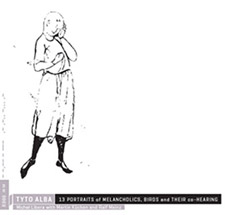
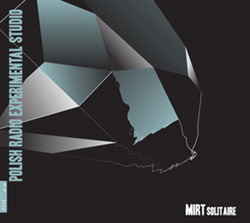



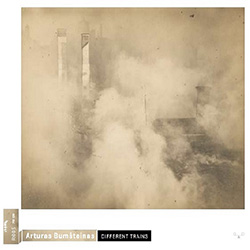

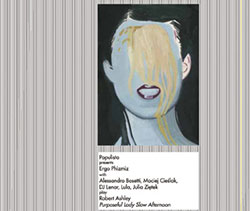


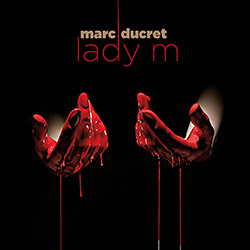
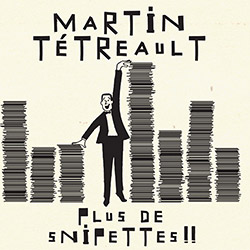
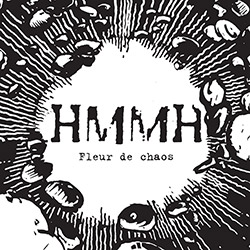
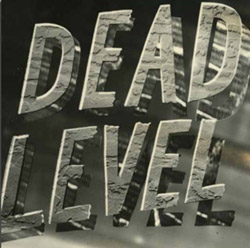
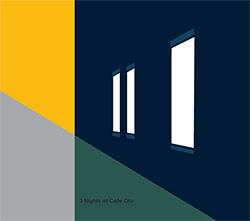
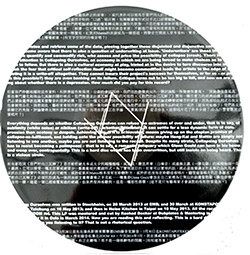

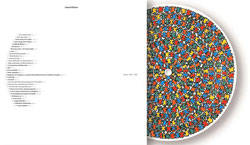




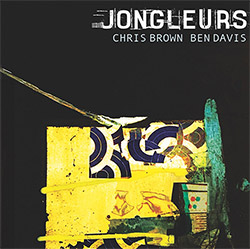
![BlueRing Improvisers: Materia [2 CDs]](https://www.teuthida.com/productImages/misc4/36513.jpg)




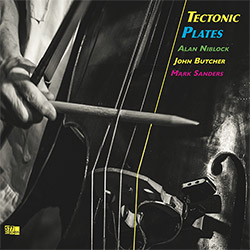



![Wheelhouse (Rempis / Adasiewicz / McBride): House And Home [VINYL]](https://www.teuthida.com/productImages/misc4/36462.jpg)
![+DOG+: The Light Of Our Lives [2 CDs]](https://www.teuthida.com/productImages/misc4/36009.jpg)


![Parker, Evan / Jean-Marc Foussat: Insolence [VINYL]](https://www.teuthida.com/productImages/misc4/36398.jpg)










![Deupree, Jerome / Sylvie Courvoisier / Lester St. Louis / Joe Morris: Canyon [2 CDs]](https://www.teuthida.com/productImages/misc4/36404.jpg)



![Eventless Plot | Haarvol: The Subliminal Paths [CASSETTE + DOWNLOAD]](https://www.teuthida.com/productImages/misc4/36232.jpg)










![Eventless Plot | Francesco Covarino: Methexis [CASSETTE + DOWNLOAD]](https://www.teuthida.com/productImages/misc4/36231.jpg)



![Das B (Mazen Kerbaj / Mike Majkowski / Magda Mayas / Tony Buck): Love [VINYL]](https://www.teuthida.com/productImages/misc4/36329.jpg)


![Eternities: Rides Again [CASSETTE]](https://www.teuthida.com/productImages/misc4/36247.jpg)
![Lopez, Francisco: Untitled (2021-2022) [2 CDs]](https://www.teuthida.com/productImages/misc4/36438.jpg)






![Money : Money 2 [2 CDs]](https://www.teuthida.com/productImages/misc4/35894.jpg)




![Klinga, Erik: Elusive Shimmer [VINYL]](https://www.teuthida.com/productImages/misc4/36258.jpg)
![CHANGES TO blind (Phil Zampino): Volume 9 - I Wave on a Fine Vile Mist [CD + DOWNLOAD]](https://www.teuthida.com/productImages/misc4/36061.jpg)

![Wallmart / Rubbish: Asset Protection [split CD]](https://www.teuthida.com/productImages/misc4/35900.jpg)


![+Dog+: The Family Music Book Vol. 5 [2 CDs]](https://www.teuthida.com/productImages/misc4/35897.jpg)
![Kuvveti, Deli : Kuslar Soyledi [CASSETTE w/ DOWNLOAD]](https://www.teuthida.com/productImages/misc4/36107.jpg)

![Brown, Dan / Dan Reynolds: Live At The Grange Hall [unauthorized][CASSETTE]](https://www.teuthida.com/productImages/misc4/36245.jpg)








![Palestine, Charlemagne / Seppe Gebruers: Beyondddddd The Notessssss [VINYL]](https://www.teuthida.com/productImages/misc4/36206.jpg)
![Palestine, Charlemagne / Seppe Gebruers: Beyondddddd The Notessssss [NEON GREEN VINYL]](https://www.teuthida.com/productImages/misc4/36207.jpg)

![Laubrock, Ingrid: Purposing The Air [2 CDs]](https://www.teuthida.com/productImages/misc4/35639.jpg)

![Yoko, Ono / The Great Learning Orchestra: Selected Recordings From Grapefruit [2 CDs]](https://www.teuthida.com/productImages/misc4/35841.jpg)









![Zorn, John / JACK Quartet: The Complete String Quartets [2 CDs]](https://www.teuthida.com/productImages/misc4/35609.jpg)

![Lonsdale, Eden: Dawnings [2 CDs]](https://www.teuthida.com/productImages/misc4/35480.jpg)



![Sorry For Laughing (G. Whitlow / M. Bates / Dave-Id / E. Ka-Spel): Rain Flowers [2 CDS]](https://www.teuthida.com/productImages/misc4/35985.jpg)

![Rolando, Tommaso / Andy Moor : Biscotti [CASSETTE w/ DOWNLOADS]](https://www.teuthida.com/productImages/misc4/36106.jpg)


![Electric Bird Noise / Derek Roddy: 8-10-22 [CD EP]](https://www.teuthida.com/productImages/misc4/35970.jpg)








![Elephant9 : Mythical River [VINYL]](https://www.teuthida.com/productImages/misc4/34624.jpg)



![Elephant9 with Terje Rypdal: Catching Fire [VINYL 2 LPs]](https://www.teuthida.com/productImages/misc4/35355.jpg)
![Deerlady (Obomsawin, Mali / Magdalena Abrego): Greatest Hits [VINYL]](https://www.teuthida.com/productImages/misc4/34876.jpg)







![Surplus 1980: Illusion of Consistency [CD]](https://www.teuthida.com/productImages/misc4/35069.jpg)
![Staiano, Moe: Away Towards the Light [VINYL + DOWNLOAD]](https://www.teuthida.com/productImages/misc4/35037.jpg)
![Coley, Byron: Dating Tips for Touring Bands [VINYL]](https://www.teuthida.com/productImages/misc4/17906.jpg)

![Lost Kisses: My Life is Sad & Funny [DVD]](https://www.teuthida.com/productImages/misc4/lostKissesDVD.jpg)